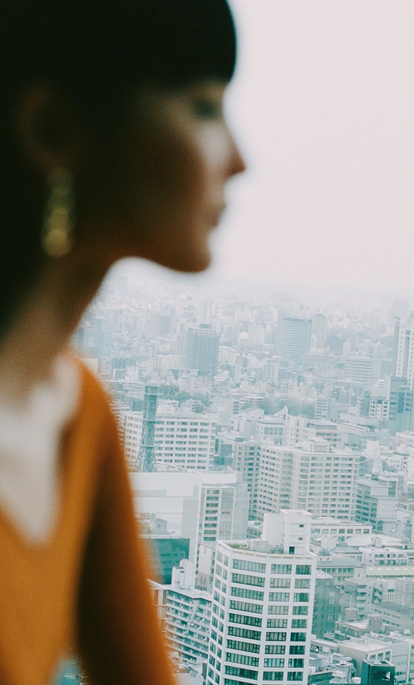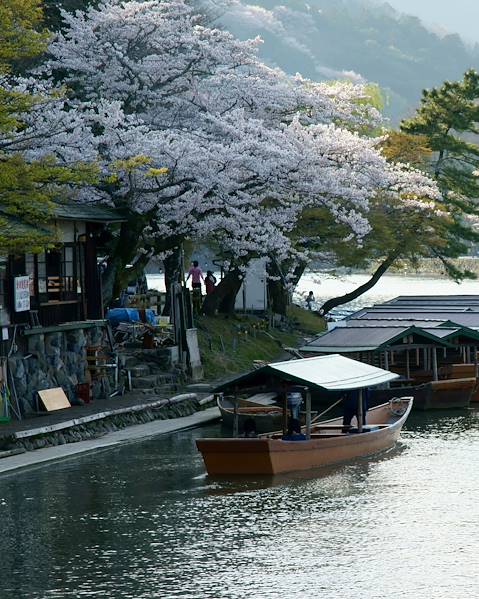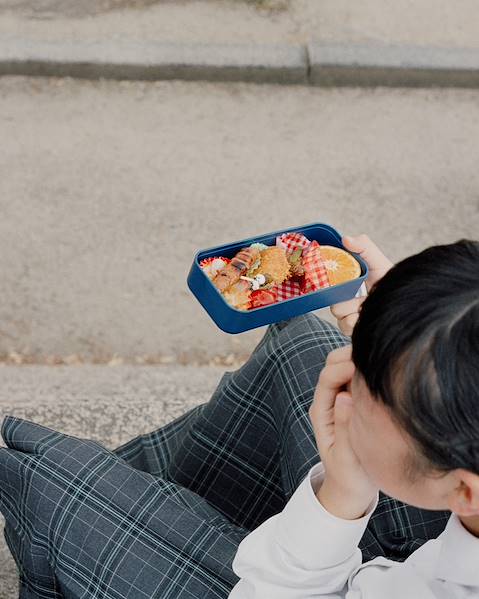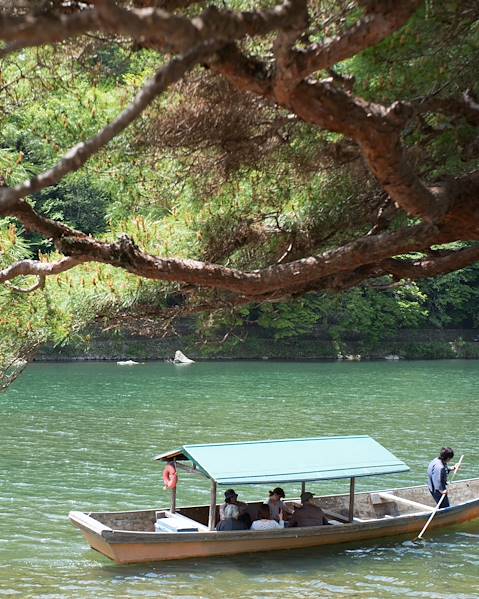Population
126,700,214 (2019)
Official language
Japanese
Languages spoken
99.2% of people in Japan have Japanese as their first language. There are still a few lesser-spoken languages across the islands, including: Amami, Kyukyu, Kikai and Miyako. The Ainu language (spoken in Hokkaido) is critically endangered as a language, and only 15 people identified as speaking in in the late 1990s. Korean is spoken by 0.5% Population and Chinese about 0.2%. Some people may speak English in the major cities but it’s not a given.
People
According to the 2018 census, 97.8% of the people of Japan are Japanese, with the remainder being foreign nationals residing in Japan, generally for work. The Ainu people, indigenous to Hokkaido, is about 150,000.
Religion
Shinto is the traditional religion of Japan. It doesn’t believe in one god, but instead that spirits inhabit all things. While not everybody in Japan practices Shinto, it is deeply engraved in their customs and culture. Buddhism is the other main religion in Japan. It arrived in the sixth century from China and has changed and adapted over the centuries.
National Holiday
February 11: the anniversary of the founding of the State (in 660 BC).
Holiday Schedule
January 1: New Year's Day. Second Monday of January: the Coming of Age Day (it is held to congratulate and encourage all those who have reached or will reach the age of majority (20 years old) between April 2 of the previous year and April 1 of the current year). Around March 21: Spring equinox. April 29: Festival of Nature. May 3: Anniversary of the Constitution (May 4 is also a holiday). May 5: Children's Day. Third Monday of July: Day of the Sea. Third Monday of September. Respect for the Aged Day. Around September 23: Autumn equinox. 2nd Monday of October: Day of Sports. November 3: Day of Culture. November 23: Labor Day. December 23: Anniversary of the Emperor. Note: If a holiday falls on a Sunday, the following Monday is a holiday.
History
Much of Japan’s history is enveloped in myth. The imperial ideology of the eighth century established that Japan was born in 660 BC, under Emperor Jimmu. Then from 300 BC to 300 AD (although these dates are somewhat disputed by archeologists who say that the period may have started at early as 1,000 or 800 BC) the Yayoi civilization marks the change from hunter gatherers to farmers. During this time, the population in Japan boomed, and Shintoism was the key religion. There were numerous clans during this time, and the Book of Han (82 AD) refers to Japan as Wa, and states that Wa was divided into 100 kingdoms. However, Chinese historical literature stats that by 240 AD, one kingdom called Yamatai run by a female monarch called Himiko, had gained power over the others.
The influences from China and Korea show their mark in the Asuka period (538–710 AD) with Confucianism and Buddhism gaining popularity, with Buddhism even becoming the religion of the court, where the emperor has real power.
In 710 AD, the capital was built in Nara (Kansai), but in 794 it was moved to Heian Kyo (Kyoto). The Heian period (794–1185 AD) saw the culmination of imperial civilization. Arts, architecture and literature flourished, Buddhism grew with dedicated schools (Tendai and Shingon esoteric sects, for example), but with much of the focus in the upper classes, the economy took a hit as more land was privately owned and less time and attention was given to the general population. With many claimants to the throne, clans fought for power, with Yoritomo eventually becoming the rulers of Japan.
From 1185 to 1868, the country was run by Shoguns - military dictators. Division was still rife in the following centuries with many people fighting for land and power, but some - Nobunaga in particular - wished to unite Japan. Although Nobunaga was killed, Hideyoshi continued his quest for unification, and eventually, in the late 16th century, it was complete. Hideyoshi made a lot of changes across Japan, including giving all those who cultivated land the status of ‘commoners’ which essentially granted them freedom from slavery, meaning that most of Japans slaves were now free. Hideyoshi also wanted to conquer China and Korea and launched two huge invasions. However, he was unsuccessful and the war ended upon his death in 1598.
The Tokugawa period - better known as the Edo period, with Edo being the former name of Tokyo, their capital - lasts from the early 17th century until 1868. The country is unified and is run by 200 lords - the daimyo - but Japan is closing in on itself; it keeps diplomatic relations with Korea, and only China and Holland are allowed to trade with it. This time saw the first the Portuguese merchants, and St. Francis Xavier landed at Kagoshima in 1549. The rest of the world came knocking on Japan’s door, with the USA in being particularly eager. In 1854, the Convention of Kanagawa opened two commercial ports and the USA and Europe are both trading through Japan. However, this destabilised the shogunate (under the military dictator) and those who oppose and support the ports clash. The opposers win and restore the Empire in 1868, under Emperor Mutsuhito, and the Meiji era begins. Japan adopted some Western institutions: a legal political system, economic organisation, a standardised Imperial Army and, importantly, an educational system that is able to disseminate new knowledge and ensure the loyalty of all to the emperor and nation. During this time, industrialisation grew and Japan built many factories, making manufacturing its main industry.
Japan went to war against China in 1895 and Russia in 1905, and Japan won control over Korea, The Meiji era ended in 1912, and the Taisho era (1912-1926) began. Japan sided with the Allies in World War I and Japan enjoyed huge economic growth, evening seizing colonies from Germany in the South Pacific.
The Showa period is marked by 63 years under Emperor Hirohito, from 1926 to 1989. It is the longest in recorded Japanese history. The start of this reign saw extreme nationalism and expansionist wars, but after being defeated in World War II, Japan was occupied by foreign powers for the first time in its history, and then re-emerged as a major world economic power.
Policy
Japan is a constitutional monarchy governed by the Constitution of 1947. The Emperor is the state symbol. The parliament (the Diet), which holds the legislative power, has a lower chamber, the House of Representatives (480 members), and an upper house, the House of Councilors (242 members). The Prime Minister - the chief executive - is chosen by the parliament and appointed by the Emperor. He appoints and dismisses ministers. The government is composed of a majority of ministers from parliament, and all must be civilians.
Famous Japanese People
- Sei Shonagon (c. 966 – 1017 AD) was a writer who served the Empress Teishi. She wrote The Pillow Book, which is full of musings and observations during her years in court.
- Murasaki Shikibu, author of the Tale of Genji.
- Yohji Yamamoto (born 1943) is a star of haute couture. His sculptural design and sleek clothing takes inspiration from traditional Japanese costumes, which he interpreted into contemporary fashion.
- Hakuho Sho (Munkhbat Davaajargal, born 1985) is a Sumo wrestler of Mongolian origin. In the 69th yokozuna, the highest rank of the discipline, he is an example of the opening of Japanese culture to foreigners, to the extent that they accept the rules and constraints.
- Jocho Yamamoto (1659-1719), samurai and compiler. He wrote the Hagakure, the famous and ethical practice manual of the warrior.
- Akira Kurosawa (1910-1998) is one of the masters of Japanese cinema. His flamboyant style crossed almost every genre.
- Naoko Takeuchi (born 1967) is a well-known and award-winning manga artist. She created the internationally-renowned Sailor Moon which took manga to an international audience.
Etiquette
- Tipping is not part of Japanese customs and can sometimes even be considered insulting. Local guides are the only persons to whom it is customary to leave a tip, but this is still entirely discretionary.
- Public baths, or onsens, are popular in Japan. Always check the etiquette before you go, but a good general rules is that before taking a public bath, wash your whole body and hair and rinse well in one of the dedicated showers, it is very much frowned upon to enter with soap or suds on you.
- When you enter a temple, house or a ryokan, be sure to take off your shoes. It’s very bad manners to keep them on. Almost all places will have slippers for you to wear indoors. However, remove all footwear before stepping on tatami.
- In Japan, the respect for the elderly is a sacrosanct rule, and this includes anybody that is older than yourself.
- If sitting on the ground, don’t switch from side-to-side or leg-to-leg, and if sitting on a chair, do not turn your feet towards anyone. Posture is very important and seen as a sign of good education and manners.
- In temples and shrines, carefully follow the instructions of behavior and talk quietly.
- Only cross the street when the pedestrian light is green.
- If going to somebody’s house, taking a small gift is very polite, such as wine, chocolates or flowers. However, don’t give gifts in sets of four as the word for four is is close to that of the word fo death.
- Be on time for appointments and make sure you have business cards if it is a business meeting (business card is essential to any working relationship: it shows your rank and position within the company you represent which is important to the Japanese; the behavior and language of the person you meeting with will adjust to this situation).
Eating etiquette:
- Japanese people don’t tend to walk while they eat
- At the table, everything that you have touched with your chopsticks you must take
- Don’t push the food directly from the bowl into your mouth
- Never stick chopsticks into rice (as this gesture is linked to funeral rites).
Shopping
Japan is seen as a shoppers paradise. Markets have handmade trinkets and souveniers as well as clothes, shoes and accessories. There are also huge malls with a mix of international brands and Japanese brands but be aware that sizes tend to be quite small, so try everything on if possible.
Take advantage of the many handicraft shops and stalls that you will find in most provincial towns, where you can buy ceramics, lacquer, wood, bamboo, bronze, washi (traditional Japanese paper); origami (folded paper), calligraphy boxes, ukiyo-e paintings (traditional prints), toys and lucky ornaments; clothes and cotton fabric or silk kimonos, beads, dolls; sabers; cakes and confectionery; electronics and cameras. Good quality items can be expensive but you can shop around.
Food
Japanese food on the whole is excellent. There may be some ingredients that you’re not used to or wouldn’t eat normally, though, so be sure to either check in advance what to look out for, or jump in whole heartedly and try a bit of everything anyway. Fish is a staple of the Japanese diet, as are rice and noodles. Bento boxes are a popular takeaway lunch, especially for students or office workers.
There are several types of restaurants :
- The most traditional of all, ryotei, offer the best traditional cuisine and service of the utmost quality, sometimes with entertainment by a Geisha. Popular with politicians and business people, they usually need a referral to get a table.
- Shojin ryori is cuisine that’s related to Buddhism. This vegetarian and vegan food is served at restaurants often located in the vicinity of the monasteries.
- Nomiya and aka-shochin are taverns, frequented almost exclusively by the Japanese.
- Kappo, ippin-ryoriya, koryoriya and izakaya can be compared to French bistros or English pubs for casual food.
There are also a multitude of restaurants specializing in sushi, sashimi (raw fish slices), yakitori (skewered grilled chicken), sukiyaki (beef and vegetables grilled on a skillet) shabu-shabu (beef hotpot), tempura (fried vegetables or shrimp), ramen (noodles in broth), the tonkatsu (pork cutlets breaded), soba (buckwheat noodles, served cold), udon (thick wheat noodles) or unagi (grilled eel).
Drink
Tap water is drinkable everywhere. Tea is the most traditional drink and it is still popular today; tea houses have traditional green tea with delicate handmade sweets, or you can even attend a tea ceremony which is a huge part of Japanese culture. When it comes to alcohol, Japanese beer is excellent. Japanese beers tend to be light and sweet but craft breweries in the country are also trying other types. Sake (rice wine) is the traditional alcohol of Japan and can be drunk hot or cold; shochu is a slightly sweet drinks that’s often used in cocktails, especially with fruit. It’s stronger than wine but lighter than most spirits. The other drink that Japan is known for is its whiskey, and you can find some of the world’s best whisky here.
















